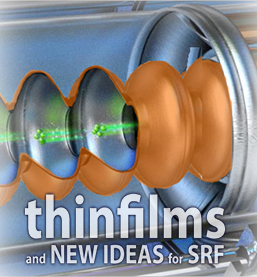Conveners
RF and material characterization for SRF films: Part 1
- Reza Valizadeh (STFC Daresbury)
RF and material characterization for SRF films: Part 2
- Marc Wenskat (DESY)
RF and material characterization for SRF films: Discussion
- Tobias Junginger (University of Victoria and TRIUMF)
We have a system for the third harmonic measurement of thin-film sample at KEK, and NbN thin-film samples were measured. We have another system for the third harmonic measurement of thin-film sample at Kyoto University and NbN and NbTiN thin-film samples were measured. The NbN thin-film samples were created by ULVAC, Inc. in collaboration with KEK. The NbTiN thin-film sample was created by...
Construction of test system for 3.0-GHz single-cell cavity at KEK.
Measurement system for lambda of thin-film sample at Kyoto University
A low-power SRF test facility is currently being developed at Daresbury Laboratory as part of the superconducting thin film testing programme. The facility consists of a bulk niobium choked test cavity operating at 7.8 GHz surrounded by three RF chokes housed within a dry, liquid helium free cryostat. The cavity is able to test thin film planar samples of up to 10 cm in diameter at...
The Cornell sample host cavity was designed to measure the surface resistance of 5” diameter disks at 4 GHz as a function of temperature and RF field strength. Major changes to the system have been completed, including the addition of a transmitted power probe and a complete redesign of the fundamental power coupler. Calibration results demonstrating the improved performance are presented...
As superconducting radio-frequency (SRF) cavities are now approaching the theoretical limits of the material, a variety of different surface treatments have been developed to further improve their performance; although no fully understood theory is yet available. Small superconducting samples are studied to characterize their material properties and their evolution under different surface...
The systematic study of multilayer SIS films (Superconductor-Insulator-Superconductor) is being conducted in Helmholtz-Zentrum Berlin. Such films theoretically should boost the performance of superconducting cavities, and reduce some problems related to bulk Nb such as magnetic flux trapping. Up to now such films have been presented in theory, but the RF performance of those structures have...
The microscopic origins of Superconducting Radio Frequency (SRF) cavity breakdown by surface defects are still not completely understood. To locally study the electrodynamics of superconductors, a near-field magnetic microwave microscope was built. We study the 3rd harmonic response as a function of rf field amplitude and temperature. In previous experiments on Nb, two different types of...
The material of choice for current SRF accelerators is bulk Nb which is reaching the theoretical limits in terms of maximum accelerating gradient, Eacc. One method to increase Eacc is to use superconductor-insulator-superconductor, SIS, structures, where the thin films on the surface are smaller than the London penetration depth to screen the applied field, Happ, such that the thicker...
Measurement system for lambda of thin-film sample at Kyoto University

